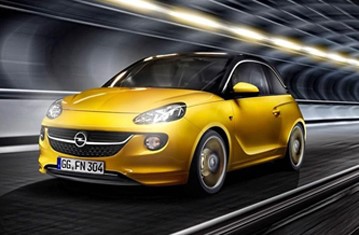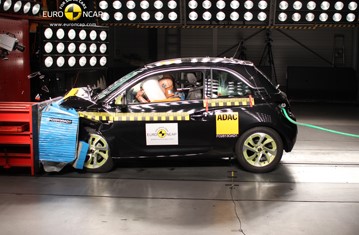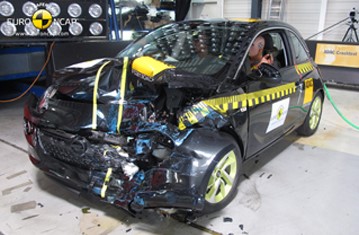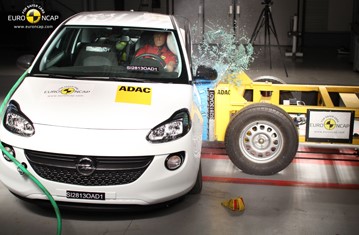Find more information in the General Comments section of the assessment
Find more information in the Rating Validity tab of the assessment
- See More
- See More
- See More
- See More
- Good
- Adequate
- Marginal
- Weak
- Poor
 Passenger
Passenger
 Driver
Driver
 Front Seat
Front Seat
 Car
Car
 Pole
Pole
- Good
- Adequate
- Marginal
- Weak
- Poor


Passenger
outboard
Fitted to the vehicle as standard
Not fitted to the test vehicle but available as option
Not Available
-
Infants up to 13 kg
-
Infants and toddlers up to 18 kg
-
Toddlers from 9 to 18 kg
-
Toddlers over 18 kg
Easy
Difficult
Safety critical
Not allowed
| Seat Position | |||
|---|---|---|---|
| Front | 2nd row | ||
| Passenger | Left | Right | |
| Maxi Cosi Cabriofix (Belt) | |||
| Britax Römer King Plus (Belt) | |||
| Britax Römer Duo Plus (ISOFIX) | |||
| Britax Römer KidFix (Belt) | |||
| Maxi Cosi Cabriofix & EasyFix (Belt) | |||
| Maxi Cosi Cabriofix & EasyFix (ISOFIX) | |||
| BeSafe iZi Kid X3 ISOfix (ISOFIX) | |||
| Maxi Cosi Pearl & Familyfix (ISOFIX) | |||
| Britax Römer KidFix (ISOFIX) | |||
Easy
Difficult
Safety critical
Not allowed
In the frontal impact, forward movement of the child dummies, both sat in forward-facing restraints, was not excessive but protection of their chests was rated as fair owing to the chest decelerations measured. In the side impact, both dummies were properly contained by their restraints, minimising the likelihood of dangerous head contact with parts of the car interior. The passenger airbag can be disabled to allow a rearward-facing child restraint to be used in that seating position. Clear information is provided to the driver about the status of the airbag and the system was rewarded. The rear outboard seats could not accommodate the group II/III child restraint but, otherwise, all restraints for which the car was designed could be accommodated without a problem. Cars before VIN W0L0MAP08E6000067 contain slightly different information in the user manual regarding installation of the group II/III restraint in the front passenger seat.
- Good
- Adequate
- Marginal
- Weak
- Poor

Head Impact 13.6 Pts
Pelvis Impact 4.0 Pts
Leg Impact 6.0 Pts
The bumper scored maximum points for the protection it provided to pedestrians' legs. The front edge of the bonnet was good in most areas tested but provided poor protection at the outer edges. The bonnet surface, where a child's head might strike, showed mixed performance with areas of good, adequate and marginal protection. The windscreen offered good head protection to taller pedestrians but was poor around the windscreen pillars and at the base of the screen.
- Good
- Adequate
- Marginal
- Weak
- Poor
| Speed Limitation Function | Manually Set |
| System Name | ESC | |
| Performance | ||
| Vehicle Yaw Rate @ COS + 1.00 s | 9.691999% | meets ECE requirements |
| Vehicle Yaw Rate @ COS + 1.75 s | 9.455999% | meets ECE requirements |
| Lateral Displacement @ BOS + 1.07 s | 2.58 m | meets ECE requirements |
| Applies To | All seats | ||
| Warning | Driver Seat | Front Passenger(s) | Rear Passenger(s) |
| Visual | |||
| Audible | |||
|
|||
--safetyAssistCommentEN--
- Specifications
- Safety Equipment
- Videos
- Advanced Rewards
- Rating Validity
Specifications
Tested Model Opel Adam 1.4 JAM, LHD
Body Type - 3 door hatchback
Year Of Publication 2013
Kerb Weight 1067kg
VIN From Which Rating Applies - from W0L0MAP08E6000067
Class City and Supermini
Safety Equipment
Note: Other equipment may be available on the vehicle but was not considered in the test year.
Fitted to the vehicle as standard
Fitted to the vehicle as option
Not fitted to the test vehicle but available as option
Not Available
Not Applicable
Videos
Advanced Rewards
Rating Validity





Find more information in the General Comments section of the assessment
 Share
Share









The passenger compartment of the Adam remained stable in the frontal impact. Dummy readings indicated good protection of the knees and femurs of the driver and passenger. Opel showed that a similar level of protection would be provided for occupants of different sizes and to those sat in different positions. The car scored maximum points for its protection of the passenger dummy, with all body areas being well protected. In the side barrier test, the Adam demonstrated good protection of all body regions except the chest, which was adequately protected. In the more severe side pole test, dummy readings of rib deflection indicated weak protection of the chest, although other parts of the body were well protected. The seat and head restraint provided marginal protection against whiplash injury in the event of a rear-end collision.